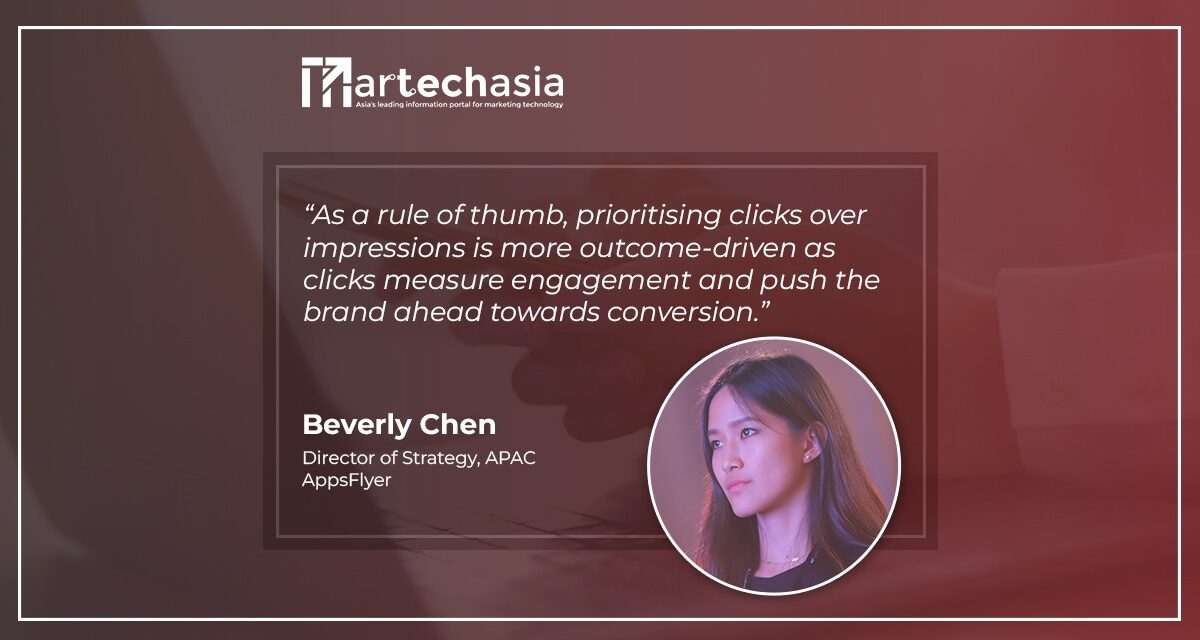Beverly Chen explores how marketers can navigate the post App Tracking Transparency (ATT) landscape in a privacy first era with regards to attribution.
It has been over a year since Apple’s ATT (App Tracking Transparency) feature was introduced. The move upended the industry, stirred debates among marketers and took a hit on companies with large advertising businesses. Meta shared that these privacy policy updates will reduce its 2022 revenue by approximately US$ 10 billion. Other large scale social media platforms like Snapchat, Twitter, YouTube also took a hit.
As of February 2022 according to AppsFlyer data, user adoption rate of iOS14+ in APAC is more than 80% and users that opted-in to ATT prompt is at 46%. This signals a generally optimistic response from consumers in consenting to data tracking. In the same period, about 57% of developers implemented the prompt within their apps.
While this feature was certainly a welcome step for consumers as it empowered them with the power of choice, it created a chasm of obstacles for marketers with data limitations that turned the campaign optimization status quo upside-down. However, it doesn’t mean that’s the end of advertising. Based on our experience of addressing marketer concerns, there are a few tried and tested mobile attribution strategies that can help marketers navigate this space.
The Benefits of Attribution
The truth is that attribution is a valuable tool for app publishers in securing a comprehensive overview of how consumers behave across multiple devices and channels every day. Getting the right measurement software can give marketers a thorough visibility into their paid, owned, offline, and in-app data across multiple touchpoints – to understand the real value of every campaign.
New methodologies such as: incrementality measurement, leveraging first party data for direct-to-consumer engagement, machine learning and predictive analytics to understand trends and user behaviour, are useful to marketers when it comes to safeguarding users’ privacy without sacrificing the quality of their experience.
So, the key is to adopt a range of tools that help marketers to uncover the insights of the data to help create optimized campaigns; campaigns that add value – within the protocols of privacy standards.
Track the metrics that matter
To start with, a thorough understanding of the nuances of the app marketing ecosystem is critical as it enables advertisers to optimize campaigns and compare the quality of user performance. Understanding the metrics that deliver the most value for the goal that you are measuring comes next. For example, registration forms are more relevant for an insurance app and high abandonment rates calls for immediate attention while for a gaming app -skipping forms is unlikely to impact the user journey.
As a rule of thumb, prioritising clicks over impressions is more outcome-driven as clicks measure engagement and push the brand ahead towards conversion.
Demystifying the SKAdNetwork
SKAN, the solution from Apple to navigate through iOS14+ privacy changes, brings to fore new mechanisms of approaching data privacy and marketing measurement. SKAdNetwork data includes the source-app-id which helps to understand how publishers connect to advertisers, and vice versa. For marketers, this is gold standard data when it comes to targeting especially in the context of privacy – where controls are high in terms of accessing data.
One of the most common questions we get asked by marketers is – how to navigate the SKAdNetwork strategically? The key solution here is the approach where SKAdNetwork needs to be addressed as part of a whole. Advertisers need to be equipped with more than SKAdNetwork to be able to accurately measure the performance of their marketing efforts. That’s where solutions like probabilistic modelling come into play. While each one has a different purpose and ticks a different box, all together they provide a complete view of performance that can help set advertisers up for success.
To opt in- or not?
We see that in regions with developing countries, the rate of ATT prompt is approximately 30% higher on average compared to developed countries. This is due to the sensitivity sentiment the developed countries have towards privacy.
Though the APAC region is displaying positive sentiment towards data tracking, it is still important for marketers to continue improving their ATT user consent rate. One of the ways to go about it is by using ATT opt-in rate as a KPI for your team. This would help enforce a clear target around how to improve tracking consent for your app.
Running A/B tests on pop-up and pre-pop-up screens would also help your app make a real impact among your user bases. I’d imagine a 1% increase in opt-in rate would help unlock hundreds to thousands of your app users, especially for re-engagement if they churned!
The bottom line is trust
Trust is easy to lose and hard to gain. Doubling down on trust by ensuring your user’s privacy is guaranteed is one of the ways of building trust with users. Investing in privacy-preserving technologies or using privacy-preserving methods would help build this trust. Furthermore, marketers need to remember that:
- Attribution improves the user experience and helps in the creation of relevant ads that resonate with users
- Attribution does not equate to tracking. The onus of app developers is to choose a platform that enables app developers to manage, analyse, and most importantly secure their consumers’ data.
- Attribution enhances consumer privacy. Machine learning is an immense value add that empowers marketer to create campaigns without being intrusive.
With trust comes the confidence to make bolder strategic moves that will help modern-day marketers seize the upside of disruption.



















